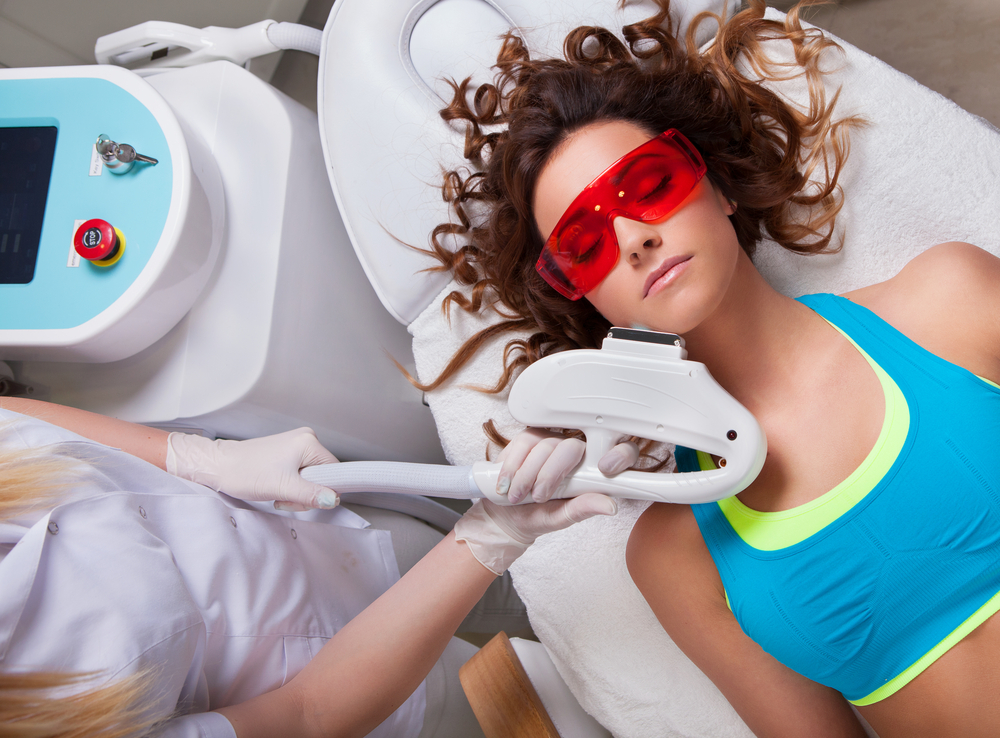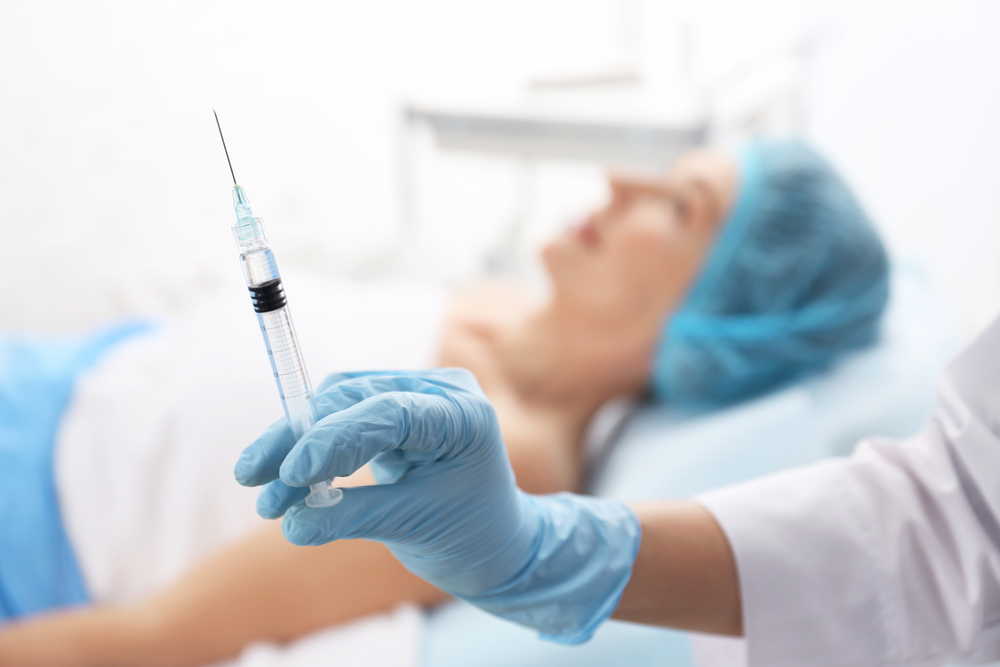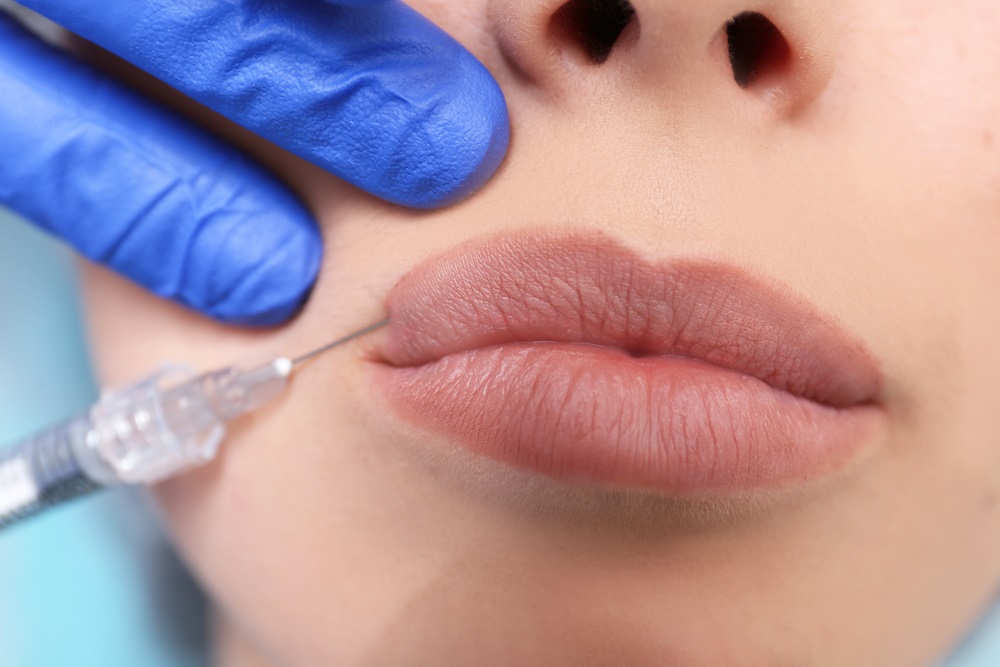- Fraxel and similar laser treatments affect only a fraction of your skin, leaving behind healthy cells to promote faster healing.
- This means less downtime and fewer side effects than with traditional laser treatments.
- A variety of fractional lasers are effective for wrinkles, scars, skin rejuvenation, pigmentation, and other conditions.
We all do it—catch ourselves examining our facial wrinkles, acne scars, uneven tone, or other flaws—and we wonder if it’s time to do something about it.
You’ve considered laser treatments, but you knew someone who stayed home for weeks afterward. You admired the outcome, but taking weeks off work while you recover? You don’t have the time or interest.
Has anything changed? Is there a way to achieve the results you want with fewer side effects and less downtime? Read on to learn more about fractional laser treatments and the answers to your practical concerns.
What are Fraxel laser treatments?
In laser resurfacing, concentrated beams of light energy remove thin layers of your skin to reduce blemishes and improve its appearance, either on your entire face or a specific region, such as under your eyes.
Two forms of lasers have traditionally been available: non-ablative and ablative.
Nonablative lasers are the gentler of the two. They create heat in the deep layers of your skin, leaving the outer layer intact, permitting quick healing and little downtime. This noninvasive method rejuvenates your skin by stimulating collagen and elastin growth below the surface, restoring firmness and tone.
Ablative lasers vaporize the outer layer of your skin. This harsher treatment means longer healing, more pronounced side effects, and added downtime, but achieves more dramatic results.
Fractional lasers, as the name suggests, damage only a fraction of your skin by poking microscopic channels in it. This minimally invasive method leaves behind healthy cells and promotes collagen growth. The result is faster healing, less downtime, and fewer risks than with traditional lasers.
The first nonablative fractional laser, called Fraxel, was pioneered by Reliant Technologies (now Solta Medical). The company offers a line of nonablative and ablative fractional lasers under the Fraxel brand name.
What’s the difference between Fraxel and other laser and light-based treatments?
Understanding the differences between the many laser treatments available can be intimidating.
To add to the confusion, just as “most people refer to photocopies as Xerox copies,” you may hear people refer to all fractional laser resurfacing as “Fraxel,” says Daniel P. Friedmann, a board-certified dermatologist at Westlake Dermatology in Austin. Yet, it is only one of many reliable brands available.
Does brand matter? “Absolutely,” says board-certified dermatologist Dr. Tanya Kormeili of Santa Monica, CA. But, she says, that’s because some laser companies sell cheaper, barely effective devices to non-core doctors, whereas specialists are committed to “a higher level of care” and “investment in laser technology.”
The American Board of Cosmetic Surgery advises consumers to not get caught up in brands, but focus on goals and qualified providers rather than “the best deal or the newest laser platform.”
Let’s compare fractional laser treatments (including Fraxel) with other laser and light treatments. According to Dr. Kormeili, “the science of lasers is in their wavelength.” The longer it is, the more powerful the laser. But there’s a catch: longer downtime.
| IPL | Fractional Diode | Fractional Erbium -Thulium | |
|---|---|---|---|
| Wavelength | 500 / 1200 nm | 1440 / 1927 nm | 1550 / 1927 nm |
| Uses | Broken capillaries, pigmentation | Superficial fine lines and wrinkles, rejuvenation, pigmentation | Fine lines and wrinkles, rejuvenation, pigmentation, scars, stretch marks |
| Pros | Few adverse events | Safe on darker skin | Safe on darker skin |
| Cons | Multiple treatments | Multiple treatments | Multiple treatments |
| Downtime | Minimal | Minimal | Minimal |
| Erbium YAG | Traditional CO2 | Fractional CO2 | |
|---|---|---|---|
| Wavelength | 2940 nm | 10,600 nm | 10,600 nm |
| Uses | Mild to moderate wrinkles, pigmentation, scars, stretch marks | Deep wrinkles, pigmentation, scars | Moderate / deep wrinkles, rejuvenation, pigmentation, scars, stretch marks |
| Pros | Less redness and swelling than CO2 lasers | Dramatic results | One treatment |
| Cons | Multiple treatments | High rates of infection, oozing, bleeding, crusting | Not effective for redness or blotchiness |
| Downtime | 3-10 days | 2-3 weeks or more | 3-10 days |
So which laser treatment is best?
Dr. Friedman suggests that the most important consideration is balance — what you’d like to achieve versus the amount of downtime you’re prepared to accept.
Fractional ablative lasers “can produce remarkable results in a single treatment, but require a week of downtime with an intense postoperative regimen,” says Friedman. You’d need to undergo many non-ablative treatments for equivalent results, but “they each produce limited to no downtime.”
He also considers skin color because darker skin types have a high risk of pigment changes with ablative treatments.
Dr. Kormeili adds that “your ethnic makeup, genetics, and lifestyle — not to mention the condition you are trying to treat — all make your treatment options, choices, and settings unique.”
How are Fraxel laser treatments done?
According to the American Society for Dermatologic Surgery, your doctor will plan treatments after reviewing your medical history, conducting a physical exam, and talking to you about your expectations.
Most fractional laser procedures (including Fraxel) are performed on an outpatient basis. Roughly 60-90 minutes before treatment, your doctor will protect your eyes and numb your skin with a local anaesthetic. You may also receive additional pain relief or sedation, especially for larger skin areas. A laser beam will be directed over the treatment area in a series of passes.
Nonablative procedures take 15-90 minutes and ablative take 30 minutes to 2 hours, depending on technique and skin area.
Do the treatments hurt?
With non-ablative fractional lasers like Fraxel, you may notice a mild prickling sensation, whereas with ablative, you may feel increased heat and discomfort. Afterward, you can use cold compresses and over-the-counter medications to relieve pain if necessary.
What is recovery like after Fraxel laser treatments?
You can wear makeup immediately after non-ablative treatment. For approximately one day you may feel as though you have a sunburn and your face may be puffy. It will look red or pink for several days. Over the next week or two, your skin will naturally bronze, followed by flaking, for which you can use a moisturizer.
After ablative fractional treatment, your skin will be red, swollen, and itchy. Your doctor will apply ointment and cover the area. Skin peeling may be pronounced. You’ll need to gently remove flakes, reapply ointment, and cover your skin with gauze daily, as directed. Redness might continue for weeks to months, but you can wear makeup after the skin regrows in 3-10 days.
What’s the downtime?
Recovery time after nonablative fractional treatment is minimal: you’ll probably return to work and other routine activities the next day.
After ablative fractional treatment, you may prefer to stay home for 3-10 days while your skin heals.
What are the side effects?
According to the Mayo Clinic, side effects from non-ablative laser resurfacing may include mild swelling and redness, infection (herpes virus flare-up), temporary skin darkening (dark skin types), and blistering and scarring (rare).
Side effects from ablative resurfacing may include swelling, itching, redness (possibly intense, long-lasting), infection (herpes virus flare-up), acne, skin lightening or darkening, scarring (slight risk), and eye injury (rare).
How many treatments are needed and when will I see results?
You’ll typically have three to five sessions of non-ablative fractional treatments, spaced two to four weeks apart or more. Your skin’s appearance will gradually improve over one to three months.
You’ll likely need only one fractional ablative treatment. Your skin will feel softer, look brighter, and have a more even tone. Over the next three to six months, you’ll see more improvement as the deeper layers of your skin continue to heal.
How do I care for my skin after Fraxel (or similar) laser treatments?
Your doctor will advise you to:
- Avoid direct sun exposure for at least three months.
- Use sunscreen with a sun protection factor of 30 for at least three months.
- Wear a wide-brimmed hat when in the sun.
How long do Fraxel treatments last?
According to Dr. Kormeili, fractional lasers “help turn back the clock.” With non-ablative, how long that lasts depends on how well you protect your skin from the sun. Your doctor may recommend annual maintenance treatments.
With ablative, “the results are permanent,” says Dr. Friedmann, “but skin is constantly aging. It is not abnormal for someone to require a fractional ablative laser resurfacing every few years for maintenance.”
How much do Fraxel laser treatments cost?
The cost of fractional resurfacing depends on your skin condition, treatment area, where you live, and the office you choose. In the United States, it can be $750- $1,500 per non-ablative treatment and $1,500-$3,000 per ablative treatment.
Am I a good candidate for Fraxel laser treatments?
Fractional laser resurfacing isn’t for everyone.
With ablative treatments, Dr. Friedmann cautions that “patients with dark skin types, poor wound healing, or a history of recurrent infections in the area” are likely to be poor candidates.
Despite non-ablative treatments being “much more forgiving, allowing for their use in most patients, you may be dissatisfied if you have excessive wrinkling and poor skin quality, unless you undergo numerous sessions.”









